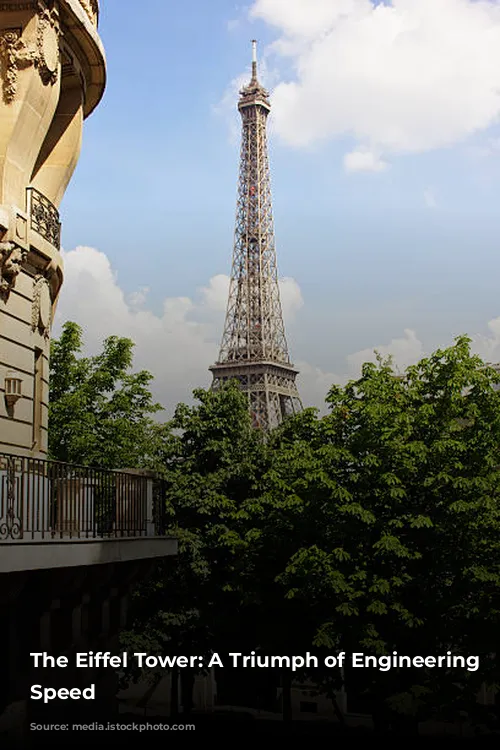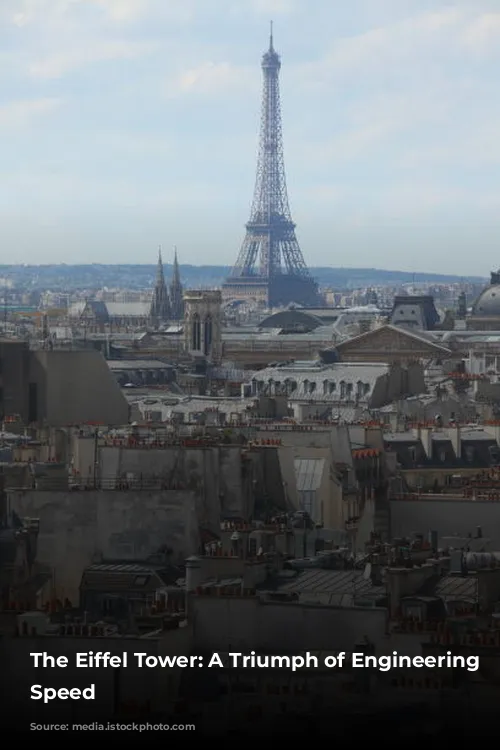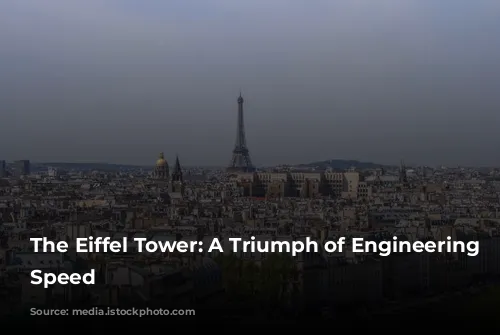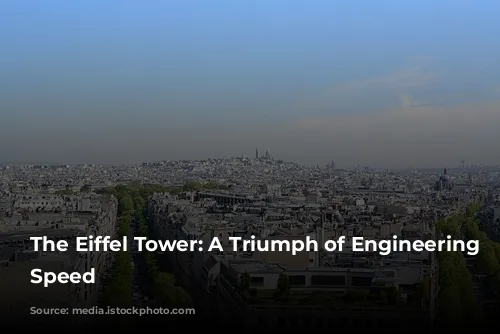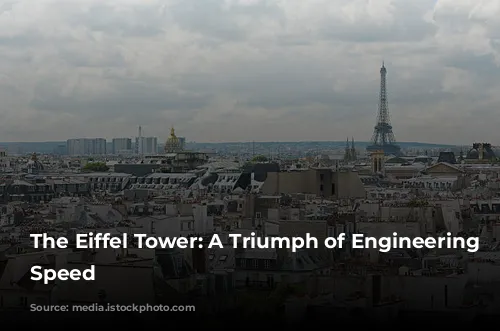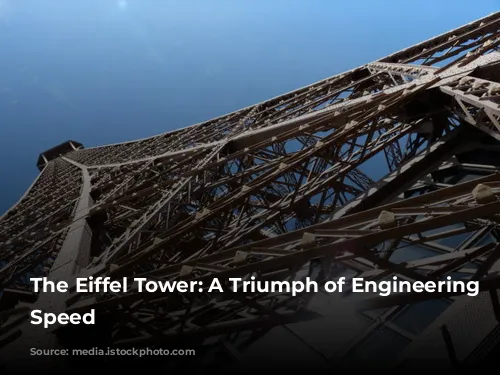Imagine building a towering monument taller than any building in the world in less than two years. It sounds unbelievable, but that’s exactly what happened with the Eiffel Tower. This marvel of engineering, a symbol of Paris, was completed in just twenty-two months, a testament to meticulous planning and innovative techniques.
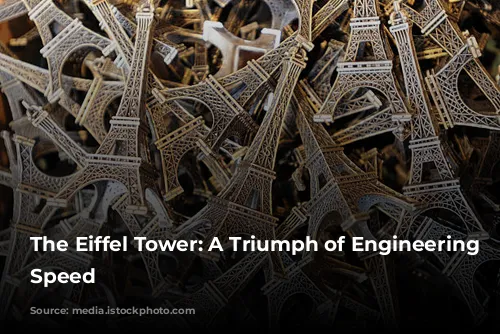
From Concept to Construction
The Eiffel Tower wasn’t built on a whim. It was born from a grand vision: the 1889 Universal Exhibition. This international event aimed to showcase the world’s most impressive technological advancements. In 1884, the idea of a 1,000-foot tower was proposed, and by 1886, Gustave Eiffel had a detailed plan ready for a competition. His design, a towering metal structure, was chosen, and the construction journey began.

A Solid Foundation for a Grand Vision
The Eiffel Tower, while seemingly lightweight, required a strong base. Excavations revealed a compact gravel layer suitable for the tower’s four pillars. However, on the Seine side, the water level presented a challenge. To overcome this, watertight metal caissons were employed to dig below the waterline. This innovative approach allowed for the construction of sixteen massive stone blocks, each supporting a corner of the tower’s base. This foundation, built in just five months, laid the groundwork for the towering structure to come.
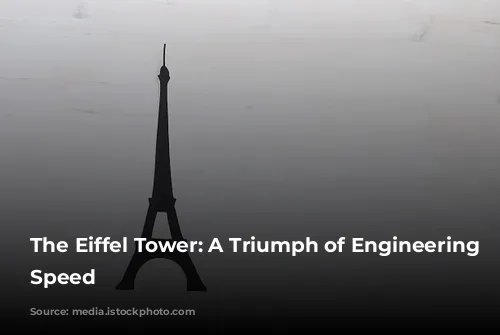
The Secret to Speed: Prefabrication
The Eiffel Tower’s rapid construction was made possible by a revolutionary technique: prefabrication. Before the first stone was even laid, Eiffel’s team meticulously calculated and designed every single one of the 18,000 parts needed for the tower. These components, made from standardized iron sheets and profiles, were precisely traced, cut, and drilled at the Eiffel workshops.
The use of rivets, which were hot-drilled into the holes of two parts before being hammered and cooled, was another key factor in the tower’s rapid assembly. The prefabrication process meant that two-thirds of the 2.5 million rivets were installed at the factory, reducing on-site work time significantly. This meticulous preplanning and standardized parts ensured a smooth and swift construction process.

Scaling New Heights: A Step-by-Step Assembly
The construction of the Eiffel Tower was a meticulous and calculated process. Wooden scaffolding was first built to support the initial four pillars, which rose obliquely towards the sky. As the tower grew, new scaffolding was added to support the first floor’s beams. A crucial step involved connecting these beams to the pillars, which required careful adjustments. “Sandboxes” and hydraulic cylinders were used to precisely position and secure the beams.
Construction then continued from the first floor, adding the second floor and finally reaching the 1,000-foot summit. As the tower grew, so did the technology. Steam cranes, capable of lifting three tons, were used to hoist prefabricated parts into place. Once in position, these parts were temporarily bolted before being permanently secured with rivets.

A Monument Built with Skill and Courage
Despite the challenging conditions of working on small, exposed platforms without safety equipment, the construction of the Eiffel Tower saw no deaths among the 117 riveters and carpenters. However, tragedy struck when an Italian worker fell after work hours, a loss for which Eiffel offered discreet compensation to his widow. On March 30, 1889, just in time for the opening of the Universal Exhibition, the Eiffel Tower stood proudly, a testament to human ingenuity and dedication. While the tower itself was completed, the installation of the elevators, a complex task in itself, was completed a few weeks after the opening.
The Eiffel Tower, an icon of Paris, is more than just a beautiful landmark. It represents the triumph of human engineering, a feat of construction achieved through meticulous planning, innovative techniques, and the unwavering dedication of its builders. The story of its rapid construction stands as a reminder of what can be accomplished when vision, skill, and determination come together.

